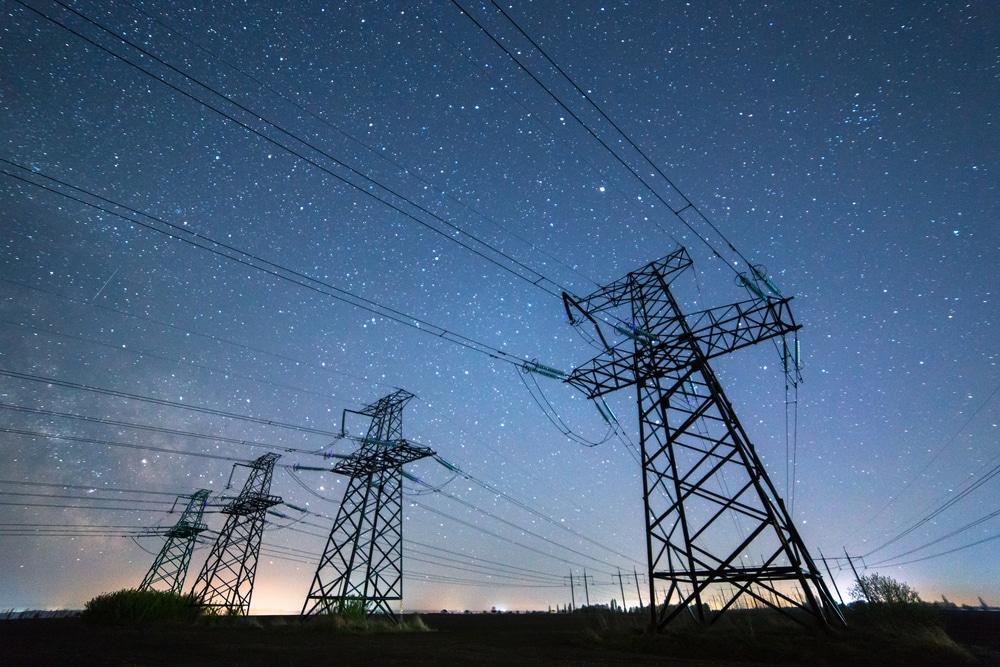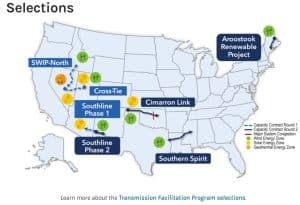The U.S. Department of Energy (DOE) is taking major steps to boost the nation’s power grid, aligning with the Biden-Harris Administration’s Investing in America agenda. The DOE announced two important actions to lower costs and improve energy access. The first is a $1.5 billion investment in four key transmission projects and the second is the release of the final National Transmission Planning (NTP) Study.
These moves reflect the administration’s commitment to making the electricity grid more reliable, resilient, and capable of meeting growing demand with affordable, clean energy.
DOE’s $1.5 Billion Boost for Critical Transmission Projects
The press release explains that the funding intends to improve the reliability of the grid, reduce transmission congestion, and generate affordable energy for millions of Americans. Supported by the Bipartisan Infrastructure Law, these projects are part of the DOE’s Transmission Facilitation Program, which helps remove financial barriers to new transmission development.
These projects will cover nearly 1,000 miles of new transmission lines, adding 7,100 megawatts (MW) of capacity. They will create close to 9,000 jobs and improve the resilience of the grid across Louisiana, Maine, Mississippi, New Mexico, Oklahoma, and Texas. The impact extends beyond job creation, as these investments are also expected to relieve expensive congestion on the grid and increase access to clean energy sources.
Key Transmission Projects Leading the Charge
The four projects, now entering contract negotiations, promise significant improvements to the nation’s power grid. These projects include:
- Aroostook Renewable Project: This project in Haynesville, Maine will add a 111-mile transmission line, creating 1,200 MW of capacity. It will connect to New England’s power grid, providing access to low-cost clean energy. The project has a $425 million potential contract value and will create over 4,200 construction jobs and 30 permanent roles.
- Cimarron Link: A 400-mile transmission line in Oklahoma, this high-voltage line will bring wind and solar energy to growing areas from Texas to Tulsa. It will provide 1,900 MW of capacity and create over 3,600 jobs with ~ $306 million contract value.
- Southern Spirit: This 320-mile line, having a $360 million contract value, will connect Texas’s grid with the southeastern U.S., providing 3,000 MW of power. This will improve resilience against extreme weather and create 850 construction jobs and 305 permanent roles.
- Southline: A 108-mile transmission line in New Mexico, adding 1,000 MW of capacity and supporting the region’s growing industries. This project will create at least 150 jobs and deliver clean energy to semiconductor and battery manufacturing facilities. Additionally, it has up to $352 million potential contract value.
These projects also support the Biden Administration’s Justice40 Initiative, ensuring that 40% of the benefits reach underserved communities that have been neglected by past infrastructure investments.
Source: DOE
Unlocking the Transmission Facilitation Program (TFP)
The DOE has introduced the $2.5 billion Transmission Facilitation Program (TFP) to strengthen the country’s electricity grid. This initiative, supported by the Bipartisan Infrastructure Law, will help build new transmission lines between regions and upgrade existing ones. It also aims to connect microgrids in selected U.S. states and territories.
Overcoming Financial Barriers
Administered through the DOE’s “Building a Better Grid Initiative,” the TFP is a revolving fund program designed to tackle the financial obstacles that often delay large-scale transmission projects. It focuses on projects that are crucial for improving grid reliability but wouldn’t move forward without government support.
The program has three key financial tools:
- Capacity Contracts: DOE will buy up to 50% of a planned line’s capacity for up to 40 years, helping project developers attract more investors and customers.
- Loans: DOE can offer loans to help with transmission development.
- Public-Private Partnerships: DOE will partner with companies within National Interest Electric Transmission Corridors (NIETC) to meet the growing electricity demand across states.
The TFP is ideal for projects that are almost ready to begin construction and need financial backing to proceed. It targets regions that rely on firm transmission lines for point-to-point electricity delivery. Projects already fully funded or with a secure revenue stream won’t be considered for this program.
Through capacity contracts, DOE will commit to buying a percentage of the proposed capacity of new transmission lines. This approach lowers the risk for developers by offering financial stability, which encourages other investors and customers to join in. Furthermore, financing is eased with DOE securing a part of the transmission line’s capacity.
DOE’s National Transmission Planning Study: A Blueprint for the Future
Along with new transmission projects, the DOE has released the National Transmission Planning (NTP) Study. This study looks ahead to 2050, focusing on how to keep the grid reliable and affordable while meeting growing energy demands.
The study shows that by 2050, the U.S. will need to expand its 2020 transmission capacity by 2x or 3x. Without this increase, the grid won’t be able to handle the country’s future energy needs. The NTP Study also reveals that expanding the grid and coordinating transmission projects between regions could save the U.S. between $270 billion and $490 billion.
By using long-term planning and smart investments, the DOE aims to secure a cleaner, more resilient, and more affordable electricity future for all Americans.
Why Transmission Expansion Matters
America’s electricity grid has powered the nation for over a century, but currently, the demands have evolved. As Deputy Secretary of Energy David Turk explains, the grid is the “backbone” of the country’s energy system, and upgrading it is crucial for future reliability and cost savings.
Turk further added,
“DOE’s approach to deploying near-term solutions and developing long-term planning tools will ensure our electric grid is more interconnected and resilient than ever before, while also supporting greater electricity demand. The Biden-Harris Administration is committed to bolstering our power grid to improve the everyday life of Americans through affordable power, fewer blackouts, more reliable power, and additional jobs across our country.”
The NTP Study emphasizes that better interregional planning—where different regions work together to meet energy needs—can lead to substantial benefits. By coordinating transmission projects across the U.S., the DOE predicts savings of $170 billion to $380 billion through 2050.
It is indeed the largest investment in grid infrastructure in U.S. history. By improving both short-term and long-term transmission planning, the U.S. is poised to meet growing electricity demand while making the grid more sustainable and accessible.



